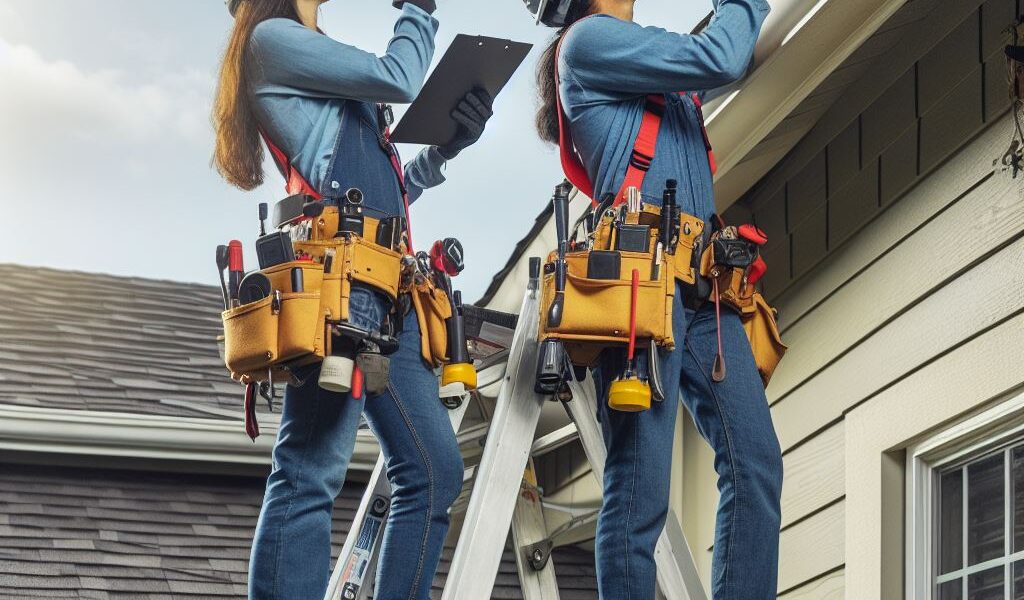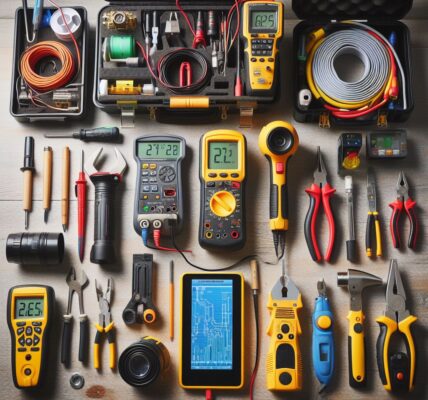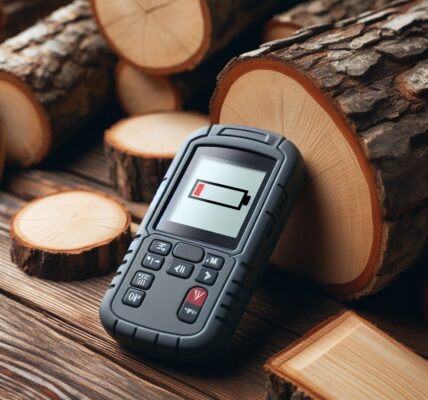Finding Faults from Above: The Essential Guide to Telescopic Ladders for Home Inspectors
Understanding the Importance of Telescopic Ladders in Home Inspection
Home inspection is a critical process that involves thoroughly examining the condition of a property to identify any potential issues or faults. It is an essential part of buying, selling, or maintaining a house. To conduct an effective home inspection, inspectors need reliable and safe access to all areas of the property. This is where telescopic ladders come into play.
Telescopic ladders are specifically designed for easy transportation and storage. Unlike traditional ladders, which can be bulky and cumbersome to move around, telescopic ladders offer convenience and portability. They consist of multiple sections that slide into one another when not in use, allowing for compact storage in small spaces such as car trunks or closets.

One key advantage of using telescopic ladders in home inspections is their adjustable height feature. These ladders can extend to various lengths based on the specific requirements of each job. This adaptability enables inspectors to reach high places with ease while ensuring their safety at all times.
Safety should always be a top priority during home inspections, as inspectors often have to climb up roofs or access tight crawlspaces. Telescopic ladders are built with sturdy materials such as aluminum alloy or fiberglass that provide strength and stability when extended fully. Additionally, many models come equipped with non-slip rungs and rubberized feet for enhanced grip on different surfaces.
Another important factor to consider when choosing telescopic ladders for home inspections is weight capacity. Inspectors need confidence that their ladder will support both their body weight and any additional equipment they may carry during inspections – such as cameras or tools – without compromising stability or structural integrity.
In terms of versatility, telescopic ladders excel due to their ability to serve various purposes within a single inspection task. For instance, these ladders can function both as extension ladders for reaching high places like chimneys or gutters and as step stools for accessing low areas such as basements or crawlspaces. This versatility eliminates the need to carry multiple ladders, saving both time and effort.
In addition to their practicality and functionality, telescopic ladders are also cost-effective. While they may initially seem more expensive than traditional ladders, their long-term value becomes evident when considering their durability and extended lifespan. These ladders are built to withstand regular use and harsh weather conditions, making them a wise investment for any professional home inspector.
When purchasing telescopic ladders for home inspections, it is crucial to ensure that they meet all relevant safety standards and regulations. Look for certifications from reputable organizations such as ANSI (American National Standards Institute) or OSHA (Occupational Safety and Health Administration) that guarantee the ladder’s compliance with industry requirements.
To summarize, telescopic ladders play a vital role in the process of home inspection by providing inspectors with safe access to various areas of a property. Their portable design, adjustable height feature, sturdy construction materials, weight capacity considerations, versatility in application, and overall cost-effectiveness make them an essential tool for every home inspector’s toolkit. By investing in high-quality telescopic ladders that meet safety standards, inspectors can confidently carry out their inspections while ensuring personal safety at all times.
Top Features to Look for When Choosing a Telescopic Ladder for Fault Finding
Telescopic ladders are a valuable tool for home inspectors as they allow them to access hard-to-reach areas and assess potential faults in buildings. When choosing a telescopic ladder, it is essential to consider certain features that will enhance its functionality and safety. In this article, we will explore the top features to look for when selecting a telescopic ladder for fault finding.
Firstly, one crucial feature to consider is the ladder’s height range. Home inspectors often encounter buildings with varying heights, so having a telescopic ladder that can reach different levels is essential. Look for ladders with multiple locking positions that allow you to extend or retract the ladder according to your needs. This versatility ensures that you can work comfortably at any height without compromising on safety.
Secondly, stability is of utmost importance when working at heights. Therefore, it is vital to choose a telescopic ladder with excellent stability features. Look for ladders equipped with anti-slip rungs or steps that provide secure footing during inspections. Additionally, opt for models with wide base sections or stabilizers as they offer enhanced stability by preventing wobbling or tipping over.
Furthermore, ease of transportation and storage should be considered when selecting a telescopic ladder. Home inspectors often need to move from one location to another quickly; hence, portability becomes an important factor. Choose ladders made from lightweight materials such as aluminum which are easy to carry around while ensuring durability and strength.
Additionally, compactness plays a significant role in convenient transportation and storage of telescopic ladders. Opt for models that collapse into compact sizes when fully retracted so that they do not take up excessive space in your vehicle or storage area.
Another crucial consideration is the weight capacity of the telescope ladder; ensure it can support both your body weight and any additional equipment you may need during inspections safely. Selecting a sturdy model designed specifically for professional use guarantees reliability even under heavy load conditions.
Moreover, inspect the ladder’s build quality and construction materials. High-quality telescopic ladders are typically made from robust materials such as aluminum or fiberglass, ensuring durability and longevity. Additionally, pay attention to the locking mechanisms that hold the ladder in place when extended. Look for secure locking systems that will prevent sudden collapses during use.
When selecting a telescopic ladder for fault finding, it is also essential to consider safety features. Look for ladders with integrated safety indicators that provide visual confirmation when the steps or rungs are fully engaged and secured in position. This feature helps minimize accidents caused by incorrect extension of the ladder.
Lastly, ensure that any telescopic ladder you choose complies with relevant safety standards and regulations in your region. Check if it has been tested and certified by reputable organizations to meet specific performance requirements. This step guarantees peace of mind knowing that you are using a reliable and safe tool during your inspections.
In conclusion, choosing a telescopic ladder equipped with top features enhances its functionality while ensuring safety during fault finding missions for home inspectors. Consider aspects such as height range, stability features, portability, weight capacity, build quality, safety indicators, and compliance with regulations when making your selection. By doing so, you can maximize efficiency while minimizing risks associated with working at heights
Safety Measures and Best Practices for Using Telescopic Ladders During Home Inspections
Home inspections are an essential part of the home-buying process, providing potential buyers with valuable information about the condition of a property. As a home inspector, it is crucial to ensure that you have the right tools for the job, including a telescopic ladder. These ladders offer several advantages over traditional ladders, such as their portability and adjustable height. However, using telescopic ladders also comes with its own set of risks and challenges. In this article, we will explore some safety measures and best practices that home inspectors should keep in mind when using telescopic ladders.
First and foremost, it is vital to inspect your telescopic ladder before each use. Check for any signs of wear or damage, such as bent rungs or loose locking mechanisms. If you notice any issues with your ladder, do not attempt to use it; instead, have it repaired or replaced immediately.
Once you have ensured that your ladder is in good working condition, take the time to familiarize yourself with its features and how it operates. Each brand may have slightly different mechanisms for extending and retracting the ladder sections – read the manufacturer’s instructions carefully to avoid any accidents or injuries caused by improper usage.
One key aspect of safely using a telescopic ladder is choosing an appropriate location to set up. Look for firm ground without any obstructions or uneven surfaces that could compromise stability during climbing or working on elevated areas. Avoid setting up your ladder near doorways or walkways where people might inadvertently bump into it.
Before ascending your ladder, always make sure it is fully extended and locked securely into place at each rung position. This will prevent unexpected collapses while working at heights.
As you climb up your telescopic ladder during inspections, maintain three points of contact at all times – two hands and one foot or two feet and one hand – just like you would with any other ladder. This will help to maintain stability and balance as you move up or down.
To ensure your safety, it is recommended that home inspectors wear appropriate personal protective equipment (PPE) when using a telescopic ladder. This includes a hard hat to protect against falling objects, safety glasses to shield the eyes from debris or dust, and sturdy work boots with slip-resistant soles for improved traction on rungs.
Another crucial safety measure is to avoid overreaching while on the ladder. Always position yourself directly in front of the area you need to inspect or access, rather than leaning dangerously sideways or stretching beyond your comfortable reach. Overreaching can cause loss of balance and increase the risk of falls.
Lastly, keep in mind that even with all these precautions in place accidents may still happen. Therefore, having an emergency plan in case of falls or injuries is vital. Ensure someone knows where you are working and have a means of communication readily available – such as a mobile phone – should immediate assistance be required.
In conclusion, conducting thorough home inspections requires more than just expertise; it also demands attention to safety measures and best practices when using tools like telescopic ladders. By regularly inspecting your ladder for damage, understanding how it works, choosing suitable locations for setup, maintaining three points of contact while climbing, wearing appropriate PPE gear, avoiding overreaching and having an emergency plan prepared; home inspectors can minimize risks associated with using telescopic ladders during their inspections. Prioritizing safety ensures not only the well-being of inspectors but also instills confidence in clients who rely on their professional services.




